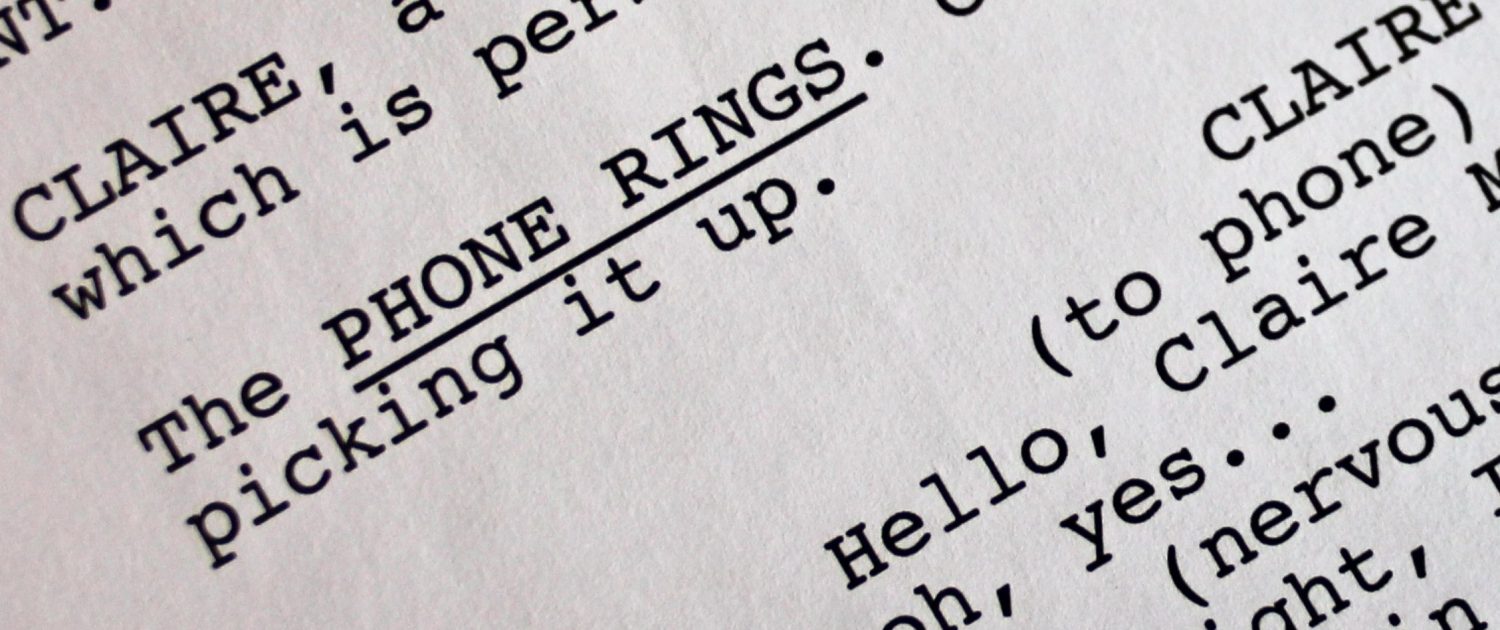How to Write Better Action Lines

By Robert Chomiak
Screenplays are a means to a finished film. Many industry people consider them blueprints. However, this comparison isn’t completely accurate. A well-written screenplay isn’t a sterile, skeletal, monochromatic set of action lines inserted between the dialogue.
Word choices impact the sight and senses of the reader. In that regard, a screenplay has more in common with a short story. The experience of reading a screenplay should approximate what the viewing of the movie will be like. In fact, another term for action lines is screen directions.
Writers may be hesitant to “direct on the page” in the misguided belief they are treading on the director’s job. This results in action lines comprised mainly of master shots that severely limit the potential of a script to translate into a uniquely visual motion picture.
Students at our film school are encouraged to craft effective action lines so that all departments—production, cinematography, art, sound, costume, hair and makeup, locations, electrical, visual effects—are working toward the same movie.
But how can you write screen directions that direct without directing? Let’s illustrate with an example:
Paolo enters the living room. He notices Saskia standing by the fireplace and crosses to her.
Sometimes the above composition is perfectly fine, particularly if the characters are well established. But if this isn’t what we’re supposed to see, the action line isn’t doing its job, never mind the director’s.
Let’s compose this beat in order to create a filmic experience:
Example #1 –suspense-thriller version
Paolo strides into the living room. He stops cold.
His eyes dart nervously. His upper lip beads with sweat.
Draped across the fireplace mantel is Saskia. Seductive. Lethal.
Let’s analyze the difference. In terms of pure formatting, this rendition adheres to the Hollywood practice of vertical writing. Each line suggests a new angle or cut.
The first line is likely a medium shot. Paolo walks in confidently, but something makes him hesitate. We don’t know why.
The second line is an extreme close-up, since we see detailed views of his nervous eyes and beaded lip. Suspense is created because…we still don’t what has stymied Paolo.
The third line cuts to a new character. It begins with “Draped across the fireplace mantel is…” This could be a straight cut to a medium shot or it could suggest panning from the hand of a woman, along up her arm, until we arrive at Saskia’s face. Two words set up her character. We get the sense Saskia may be a black widow.
This rendition tells us so much more than the original. It feels like a film.
Example #2 – comedy version
Paolo struts into the living room. He seizes up.
WHIP ACROSS to the other side of the room.
To Saskia. Shrink-wrapped in a sultry dress, teetering on stilettos, sickly grin.
The first line is essentially the same action, except the tone is different. Paolo is now overconfident, and his hesitation is comical.
The second line is directing, but without it, we don’t get a sense of the frenetic quality of the film.
The third line tells us immediately who the character is. She is dressed the same as the suspense-thriller Saskia, but the dress is too tight on her. She isn’t practiced on heels. Her face tries to be alluring but can’t pull it off.
Each example is a vast improvement over what I like to call “traffic cop directions,” so named because they’re so dry, plain, and uncinematic.
Look to your own action lines. Can the reader see your film?






Leave a Reply
Want to join the discussion?Feel free to contribute!